Description
Written for both beginners and advanced beaders with over 200 illustrations and photographs of 47 bead-work pieces. The emphasis here is on traditional Native American techniques. The patterns include Ogalala Butterfly, Peyote Stitch, Apache Leaf, Zig-zag, Potawatomi Weave, and Lakota Chain among others. Includes sources for supplies, notes on knots and threading, and an illustrated section on how to make an Indian Bead Loom. Other techniques explained are pendants, ear drops, rosettes, applique, and sewn beadery. A complete beading resource.
Publisher : Bead-Craft; Revised and Expanded ed. edition (September 1, 1989)
Language : English
Paperback : 80 pages
ISBN-10 : 0961350318
ISBN-13 : 978-0961350314
Item Weight : 6.4 ounces
Dimensions : 7.06 x 0.23 x 9.98 inches
Customers say
Customers find the book very informative, detailed, and a treasure chest of beading knowledge. They also say it’s a good book and good for its time. However, some find the illustrations difficult to follow, rudimentary, and separated from the directions. Opinions are mixed on the patterns, with some finding them nice and different, while others say they want more.
AI-generated from the text of customer reviews
[ad_2]

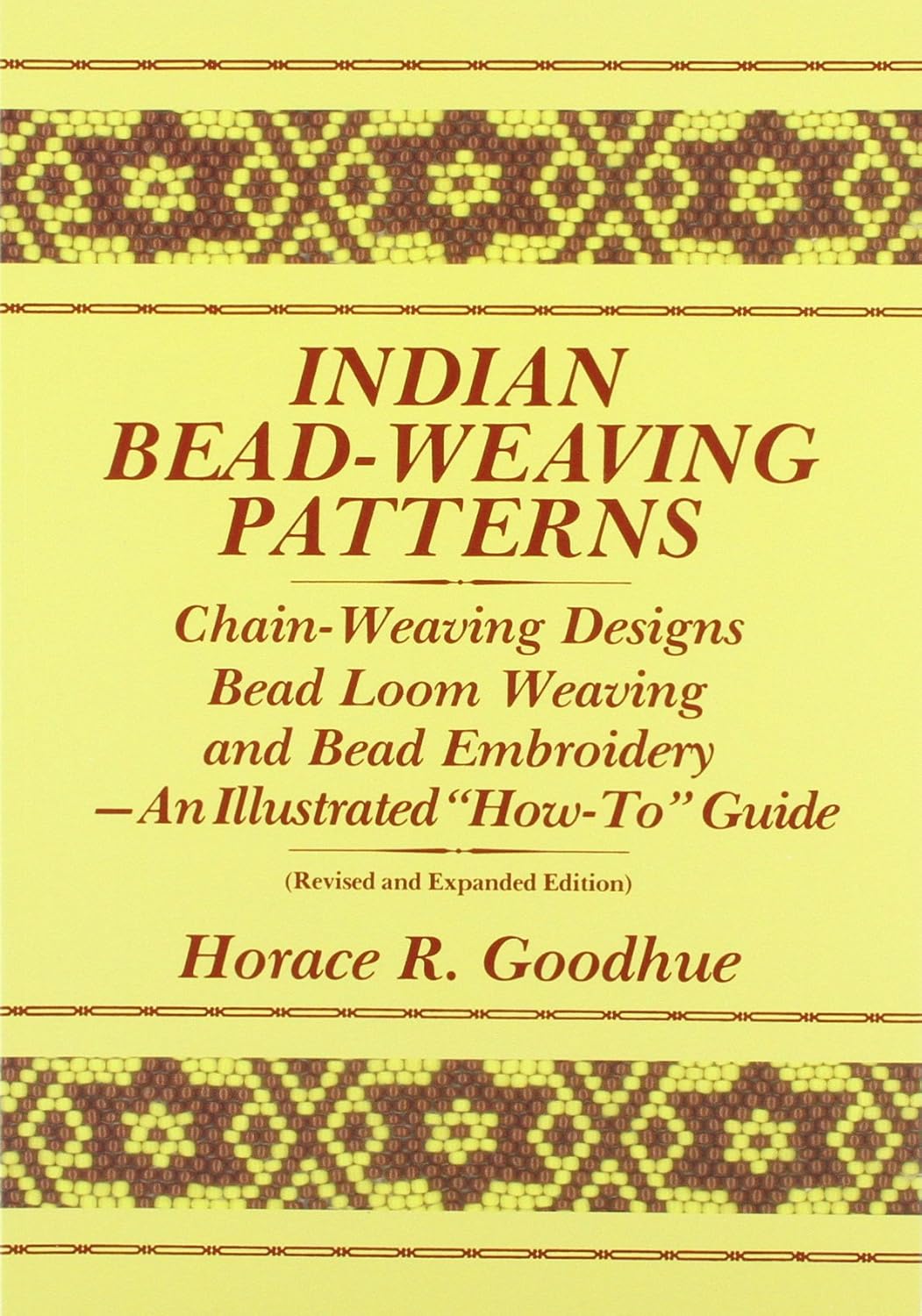
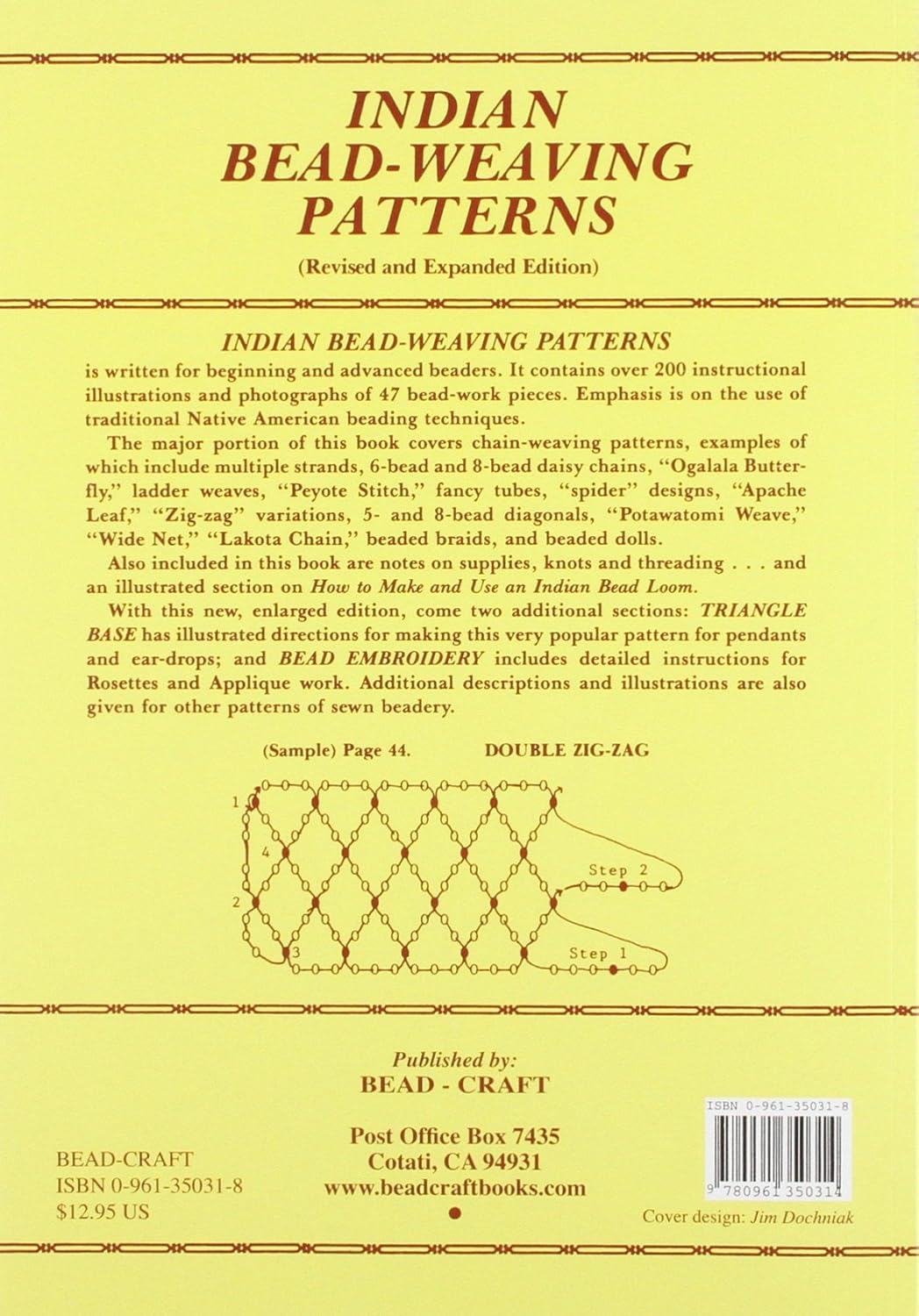
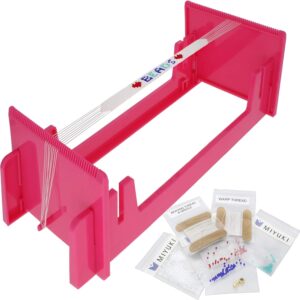
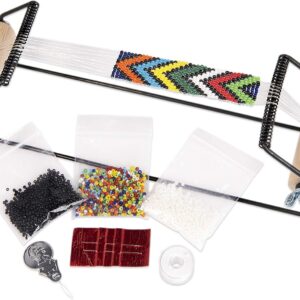
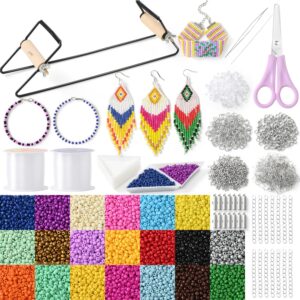
Patricia B. –
Fantastic Teaching Book!
I LOVE this book! I treat it like a one-on-one teacher, going through each technique at a time and testing myself by completing a project on my own without looking at directions, then I move on to the next. It was a bit dizzying to read at first, being that it is very basic in format, but don’t give up. I even re-wrote some of the patterns for myself, using a color palette so I could better understand some of the diagrams. All in all, I found this to be a valuable resource and I am very pleased I purchased it.
Kindle Customer –
Great Book
This will come in handy for my special patterns of bead weaving. Beautifully illustrated book, easy to follow patterns, etc.Love this book.
Kathleen V –
Great, not just for seedbeads!
Indian Bead-Weaving PatternsI tried several of the designs using larger beads, such as 4mm rounds and crystals, and 4x6mm ovals, and made some beautiful larger designs. This book isn’t just for seedbeaders! Using crystals or faceted glass beads makes some very upscale-looking jewelry, such as the spider weave, combs, and double zigzag. Some of the pages need to be turned sideways or upside-down to get an understandable view of the graphics, but in all, I learned several weaves from it, very satisfied!The Beaded Bracelet: Beadweaving Techniques & Patterns for 20 Eye-Catching ProjectsThe Art & Elegance of Beadweaving: New Jewelry Designs with Classic StitchesSabine Lippert’s Beaded Fantasies: 30 Romantic Jewelry Projects (Beadweaving Master Class Series)Cube-saics: Mimi Mosaic BeadweavingBeaded Allure: Beadweaving Patterns for 25 Romantic ProjectsThe Best Little Beading Book: Techniques and More: A Practical Guide for Beadlovers (Beadwork Books)The Beaded Jewelry for a Wedding BookSeed Bead Savvy (Best of Bead & Button Magazine)Seed Bead Stitching
Sneaky Burrito –
nice resource, though beware it is a bit dated
This book is really good for its time, but please notice it was first published in 1971. While the author has updated it and it has been reprinted several times, it is not what you would expect from a craft book published in the past 20 years or so. If you don’t go into it with unreasonable expectations, you will probably be happier. Photos of many of the weaves are included, but they are black and white and are somewhat separated from the directions for how to make them.Basic instructions for peyote stitch and making/using a loom are included, as well as a variety of netting-type stitches, daisy chains, and similar. If the author learned a particular technique from a particular tribe, he gave appropriate credit. I really do feel like he was trying to help preserve native arts and expressed an interest in the culture behind them, and he addresses issues of respect and cultural appropriation (though not using that exact term) in his introduction. This book is definitely a product of its time, however.This appears to have been set on a typewriter. Many of the bead path diagrams look to have been painstakingly laid out with the 0 from the typewriter, with later hand-drawn (sometimes assisted with a straight edge) lines. Others are clearly freehand (especially when the weave being described isn’t conducive to a flat, linear diagram). If you are used to modern photo or video tutorials, these could be a challenge to follow. If, however, you are like me, and prefer diagrams and written text, and can easily pick up patterns after trying a few repeated motifs, you will have no trouble. I tested this out by starting a choker with the “spider” weave and really, it’s turning out nicely.I don’t know that I’d start with this book right away if you are a beginner (unless you also have a teacher to walk you through some of these stitches). One nice thing, though, is that you can get started with a minimum amount of material. You would want some seed beads (size 10 — which are getting harder to find these days — or size 11 would work), a needle, stringing material (something flexible but you have a lot of options these days), and some clasps. But that is pretty much it. You can choose whatever colors you want (you aren’t given a lot of guidance in the book) and actually make a pattern into something simple and suitable for casual wear (say, by using opaque beads in single, common colors) or into a nighttime look by using metallic or iridescent seed beads, firepolished accent beads, etc.”Pattern” in the title is used in a different sense than people are used to today. You are not given an explicit list of bead types, sizes, and colors and directions to complete something from beginning to end. Rather, you are basically given thread paths for different weaves and such and you do have to use some of your own intuition to turn that into a finished piece.I think this book is a nice resource, in particular for bead chains and thin weaves that can be used alongside fancier elements made with popular contemporary beads (e.g., Czechmates).
Lori Parker –
It’s an amazing tool to have for beading.
I received it early then expected.
ClearSky –
Great Book, but. . .
I have been beading for 34 years and agree this is a great book. My problem is that I want to learn how to use the Heddle-Loom I have, and HOPED/ASSUMED that because the title included “Bead-Weaving” and “Bead Loom Weaving” that it would include tips on how to use a Heddle Loom. I have figured out a lot on my own, but I keep thinking if I could just read some directions or expert tips, it must be easier than what I’m doing. . . because that’s what a heddle loom is all about–a way to do loom work faster.So, even though what IS in the book is excellent, I’m rating it a 3 because I felt mislead by the title.
JudyAnn Lorenz –
A favorite beading book.
I have used this beading book for years. Can’t put my hands on my copy right now and may have to get another one. i have given several copies away as gifts. There are some patterns that were more difficult for me to work, but if I take my time and follow the illustrations, I am happy. My favorites are the Ogalala Butterfly pattern and the Shoshone Web pattern. But, I have done the leaves and arrow points.I have to agree with the person who said that Intermediate beaders will find the patterns easier. And with the ones who mentioned the beading as meditation…beading is definitely a spiritual experience for me and I recommend beading to anyone.
Amazon Customer –
great little starter book for beginners has patterns and directions
MJD –
Lots of useful and interesting info for experienced beaders who would like to understand more about traditional bead work
natt –
åã¦è³¼å ¥ããæ´æ¸ã®ãã¼ãºæ¬ã«ããã®æ¬ãåèã«ä½ãã¾ããã¨ããã³ã¡ã³ããè¼ã£ã¦ããããæ¥æ¬ã§ãªãã«ã¼ã ã®å çã¨ãã¦æ´»èºããã¦ããæ¹ã§ãããã®æ¬ããææ¬ã«ç´ æµãªä½åãä½ã£ã¦ããæ¹ãããã£ããã£ãã®ã§è³¼å ¥ã決ãã¾ãããOgalala Butterflyã¨ããã¯ãã¯ãã£ã¨ã¾ããã¦ãã¼ã¯ãªãããã£ã³ã°ã®ç·¨ã¿æ¹ãã¨ã¦ãæ°ã«å ¥ã£ã¦ãã¦ãã©ããªè²ã§ç·¨ãããã¨ä»ãããããããã¦ãã¾ããä¸èº«ã¯å ¨ã¦ç½é»ã§ãåçãå¿è«ã¢ãã¯ããæåã¯ã¿ã¤ãã©ã¤ã¿ã¼ã§æã£ã¦ããããã§ãæ代ãæãããã¾ããåå¿è ã«ã¯ã¨ã¦ãé£ããããããã¾ããããä¸è¦ã®ä¾¡å¤ã¯ãããã¨æãã¾ããè²åãã¯ãã¯ãç½é»ã®æ¬ãªã®ã§èªåã§èããããæ¬æã«ããè²ã®æ示ã«å¾ã£ã¦ç·¨ãã§ã¿ãããããã¾ãããã©ããªæãã«ãªããã¯ç·¨ã¿é²ããéä¸ã«ãªããªãã¨è§£ããªããã§ããããããã¾ã楽ããããªã¨ã»ã»ã»ããã¤ãã£ãã¢ã¡ãªã«ã³é¢¨ã®è²ä½¿ãã«é¢ãã¦ã¯ä»ã®æ¬ã§åå¼·ããªããã°ãªãã¾ããããä»ã¯ãããã§ããã¤ãã£ãã¢ã¡ãªã«ã³é¢¨ã®ä½åãè¼ãã¦ããHPãããã¾ããããè²è¦æ¬ã¯ãã®è¾ºããæã£ã¦ãã¦ãè¯ãã®ã§ã¯ãªããã¨æãã¾ããé£ãããã©è¯æ¸ã§ããããããã
Rose –
Bought this book to replace my old book that I lent out and was never returned. This book is very goo book that explains various techniques in detain. It is not a pattern book but rather a discourse on the actual techniques
layla –
perfect